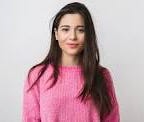AI and Creativity Exploring the Role of Artificial Intelligence in Art and Design
In recent eras, AI has begun to permeate the realm of human creativity, igniting a fascinating intersection between technology and artistry. This component showcases the departure from the conventional perception of AI as a mere computational tool. Instead, it positions it as a co-creator, capable of generating, improving and inspiring artistic expressions.
Through AI-generated artworks that command attention in the world’s leading galleries to musical compositions composed through algorithms, the creative landscape is evolving at an unprecedented pace.
Today, we will look into the dynamic relationship between AI and creativity, examining how machines aren’t only augmenting human artistic endeavors but also redefining our understanding of what it means to be creative in an increasingly AI-driven world. To understand how AI works make sure to check Certified Artificial Intelligence Foundation.
With the help of exploring AI’s multifaceted roles in creative procedures, professionals embark on the journey to uncover limitless possibilities and thought-provoking challenges at the crossroads of art and AI.
AI as the Creative Tool
AI has evolved into an invaluable creative tool that empowers artists, designers and creators across different disciplines. In the world of visual arts, AI-driven algorithms can generate breath-taking paintings, sculptures and digital art pieces. Most of the time, these creations are known as the A, I Art, which are celebrated for their aesthetic appeal and the innovative techniques employed by the algorithms.
Also, when it comes to music, AI systems have become adept at composing original pieces that resonate with audiences. From generating classical symphonies to crafting contemporary pop tunes, AI algorithms analyze vast datasets of musical compositions to create harmonious melodies and lyrics.
54.6% of artists think that generative AI technology will impact their ability to earn income from their artwork, possibly replacing original art with prints and sidestepping artists for designs.
A Generalized Method
The challenges of using AI in art underscore the difficult interplay between technological innovation and artistic expression. As artists embrace AI as a creative tool, they must navigate these challenges with mindfulness and creativity, finding ways to harness the advantages of AI while preserving their unique artistic identity and emotional resonance.
AI as a Source of Inspiration
AI can motivate human creativity by providing fresh perspectives, sparking curiosity and facilitating innovative approaches. AI can introduce creators to new ideas, styles, and concepts by analyzing vast datasets and identifying patterns humans might overlook. Here, we can take as an example that AI-driven content recommendation systems expose individuals to diverse artworks, music, literature and other creative expressions, broadening their horizons and motivating exploration beyond their comfort zones.
AI-generated music and art also motivate to inspire through presenting novel aesthetic art, and music can also inspire by presenting novel aesthetic possibilities and unconventional compositions which challenge conventional norms.
AI is the catalyst for human creativity, motivating individuals to push the boundaries of their imagination and experiment with uncharted artistic terrorists, which fosters the symbiotic relationship where machines and humans collaborate to unlock the full potential of creative expression.
The Generative AI in the Art market size was valued at USD 9.74 billion in 2022 and is expected to grow at a CAGR of 35.4% to reach USD 202.65 billion by 2032, as per a recent study by Emergen Research.
What about the Future?
The future path of AI in Art is unclear. Perhaps human AI co-creation will become the norm, with algorithms and people collaborating to achieve artistic feats that cannot be accomplished alone. Developers are also trying to permeate AI systems with aspects of consciousness and self-reflection to improve creative output.
One thing is certain: the interplay of AI and art will drive cultural and economic shifts. Generative models could democratize creativity and vastly expand artistic assortment. However, copyright, attribution, and intellectual property issues remain open challenges.
Conclusion:
AI provides a boundless horizon of possibilities that beckons us to explore, engage and create. As we have already got into the captivating realm of AI and creativity, it becomes evident that this technology is not just a tool or a mere curiosity but a great transformative force, a muse and a collaborator which can amplify our human ingenuity to unprecedented heights.
